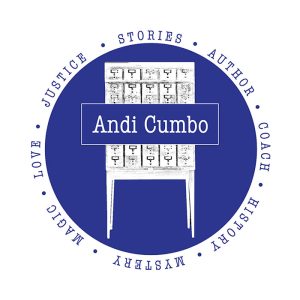Two men I admire sat on the stage in the Marina Del Rey high rise. David Ulin was on the left and Steve Heller was on the right. I wasn’t sure what to expect in this exchange – whose side was I going to come out on? I liked both of these men, respected them as writers, and thought they had valid points to make. Plus for me, more was banking on this discussion than on any presidential debate I’d ever watched. 
They were discussing the nature of fact and truth in creative nonfiction, years before John D’Agata stirred the discussion again. On the side of, what I’ll call, the “openness” of art was Ulin – who argued (and still does) that art allows for imagination and creativity, that the facts of reality are rarely solid and able to be pinned down. On the side of, what I’ll call, the “solidness” of fact was Heller who felt that our obligation to the reader is to be factual and verifiable in our facts because that is what is meant by the term nonfiction. I walked away quite surprised at myself because I found I agreed with Heller when he said (and I paraphrase here), “If you can’t write things as they happened, you’re not working hard enough at the writing.”
Now, years later, I’m enthralled in this discussion again because I’m not sure where I stand. Like Dinty W. Moore, “I wish there was another name, another genre, one that didn’t include the word nonfiction or essay in it, where John D’Agata could experiment all that he wishes. But we have a labeling problem.” I wish we didn’t feel the need to put writers (or people in general) into categories, but we do have that problem. And so, part of me thinks D’Agata and all creative nonfiction writers need to honor that reality about our society and use the labels as most people use them.
But even as I write that sentence, I pause, because I know that to change things – to get rid of this labeling problem – we need people to push those boundaries to challenge us, as D’Agata has. Also, I find the kind of postmodern experimentation that D’Agata’s work does to be meaningful, powerful, and stupendous writing. As an artist, I’m very much drawn to this genre-bending, truth-spinning work.
So what I’m left with is my own writing, my own decisions about a book that lends itself easily to imagination. When writing about people who were enslaved, I simply do not have a lot of facts to be true to. In fact, some of the largest truth I may find will arise through my imaginings of these people. Does this mean I will abandon the facts of the story as I know it? Will I exaggerate or downplay the situation of slavery or present conjecture as fact? No, I will not. But will I play with our conceptions of time and reality? Will I challenge our concepts about what is knowable by pulling to light what historians have always done – make wise, educated guesses that, unlike science, may never be verifiable? Yes, this I will do.
Should my book, then, be relegated to this new label and live with John D’Agata’s work on bookstore shelves? (Oh, to be in such good company.) No, I don’t think so. For I will be sure to make it known that this is a work of imagination, and I will trust that my readers will know it is such and read it for value our imaginations can bring to us all.
It’s about the lenses we ask our readers to don as they read our work. Do we ask them to use a microscope glass to scrutinize the elements, or are we hoping they will slip on spectacles that are tinted with the glow of imagination? Is there a difference? And is it fair to expect our readers to determine our path? Do we owe them this “contract?” Do we owe them more? Less?
I find myself again in the in-between on this discussion – leaning one way and then the next – which maybe in itself shows where my thoughts fall . . . in the twisty, openness of Ulin’s argument . . . and on the shelf with John D’Agata.
Where do you fall in this discussion? Should creative nonfiction be only fact? As an art, does the creative nonfiction writer have the license to experiment and go beyond the boundaries of fact?
I hope to have the opportunity to write more about this topic in the coming weeks. So please share your thoughts. I think this may be one of the most important conversations that creative nonfiction writers can have, and I would so very much like to engage in that conversation with you.
